Jiuzhaigou and Panda Trip in May or Oct Holiday
Jiuzhaigou and Panda Trip in May or Oct Holiday
Tour date: May or Oct. holiday
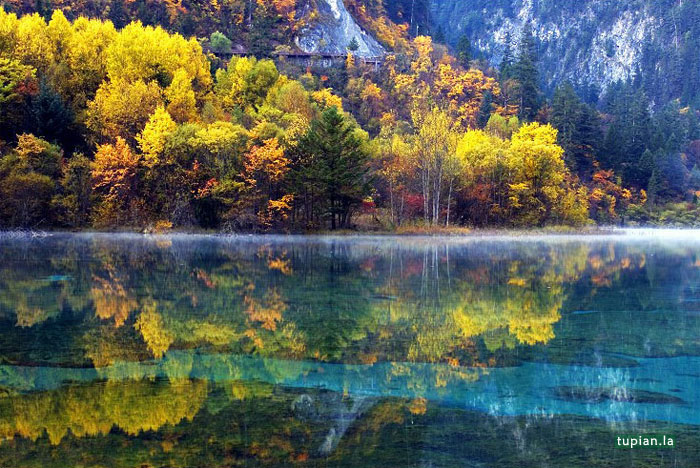
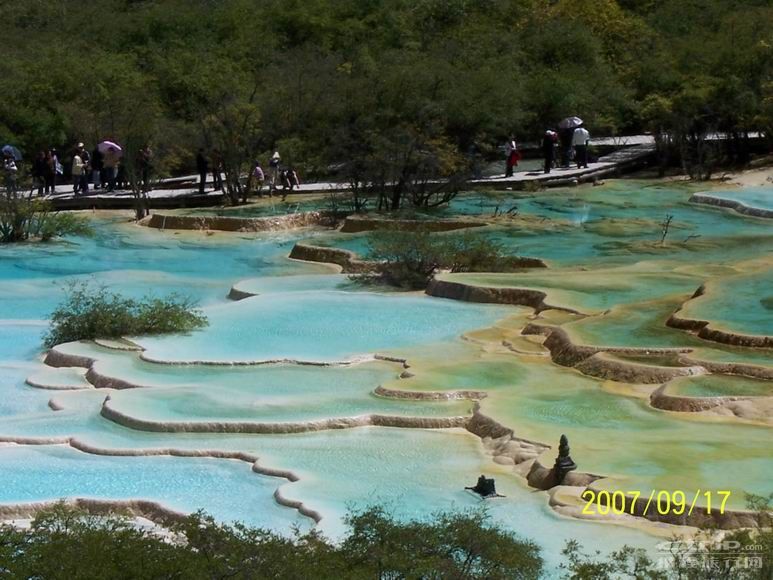
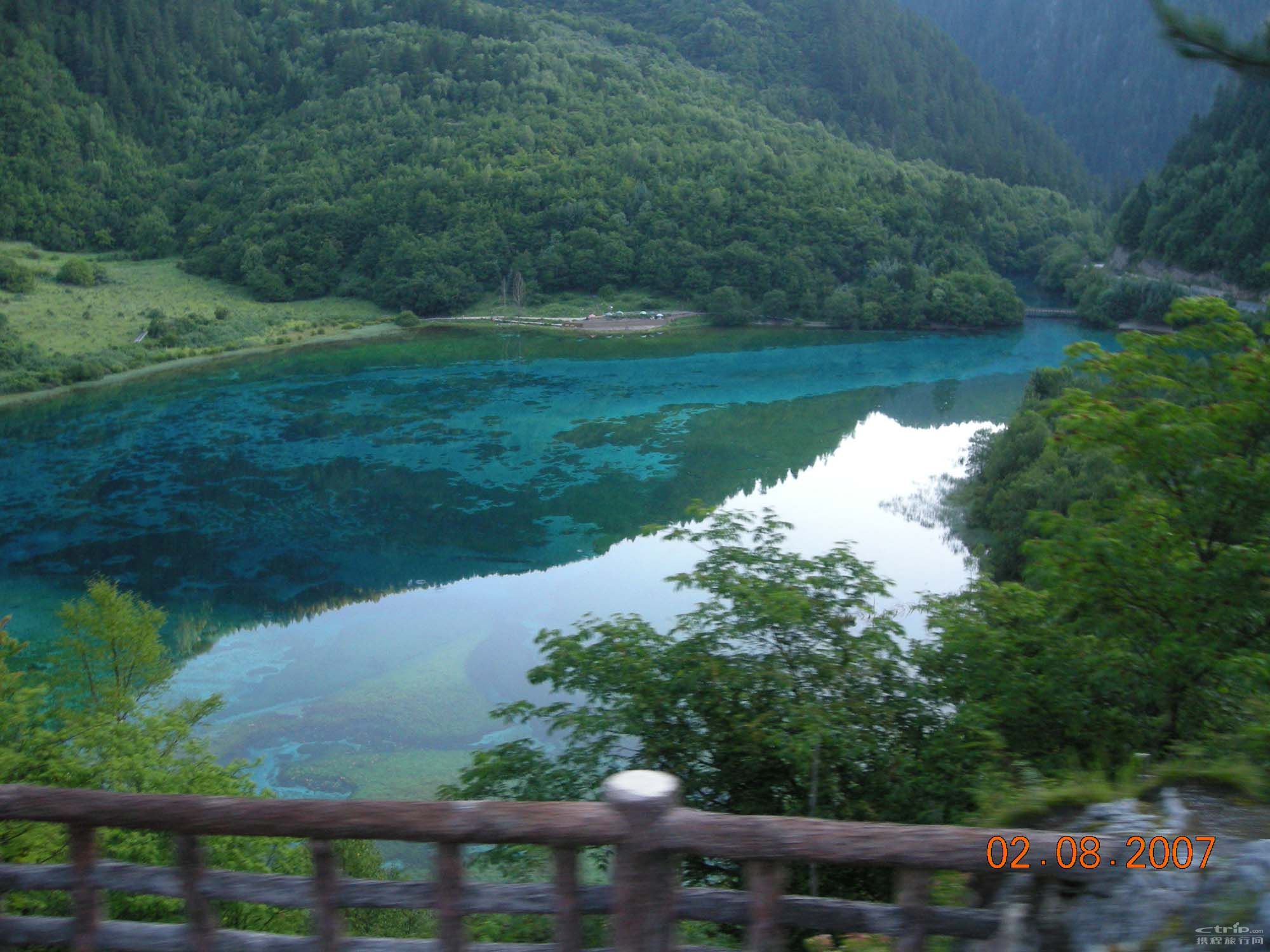
Introduction to the sites:
Jiuzhaigou valley
The world
renowned “Jiuzhaigou Valley” is rated as one of the world’s best scenic
spots. Within the vast land of 720 square kilometers, there are 6
spectacular scenic spots of blue lakes, terraced waterfalls,
snow-covered peaks, colorful forests and 9 Tibetan villages in the
valley, hence the name “Jiuzhaigou” which means 9 Tibetan villages.
Jiuzhaigou was accidentally
discovered by some Lumbermen in the 1970s. In 1978, it was declared a
nature reserve under state protection. In 1982 it was listed at China’s
first key scenic spot, and in 1990, it was selected as one of China’s
top 40 scenic attraction. In 1992, it was put on the world heritage list
by UNESCO and in 1997; It was approved as one of the world’s “Man and
Biosphere reserves”.
Jiuzhaigou Valley reputed as a
"fairylands" located in Jiuzhaigou county of the Aba Tibetan and Qiang
autonomous prefecture in Sichuan Province. It is an integration of green
lakes multi-layered waterfalls, forests and snow-mountains with Tibetan
culture and custom. And it becomes a well-known scenic area and a
natural reserve for wild animals and plants in China with its
natural-endowed and uniquely beautiful sceneries.
The green and golden trees,
the lofty and multi-shaped mountains and the clear and colorful waters
constitute the unique beauty of Jiuzhaigou while the water of Jiuxhaigou
is the soul of its beauty. So, there goes the saying: No mountain is
worth aim seeing after you have seen mount Huangshan and no other water
will interest you after your visit Jiuzhaigou. The waters of Jiuzhaigou
are widely known for their crystal clearness, pure transparency and rich
colorfulness. They are keeping their simple primitiveness without a
single trace of artificiality.
In the Y-shaped valley
embraced by mountains are dispersed 108 terraced lakes and many shoals
and waterfalls gradually flow from the heights to lower places in the
green mountain valley, winding 50 kilometers, with the blue sky, the
white snow mountains and green forests mirrored in the clear lakes,
forming a realm of integration of man and heaven against the primitive
water-mills, stocked villaged and the forest of buddhist streamers. 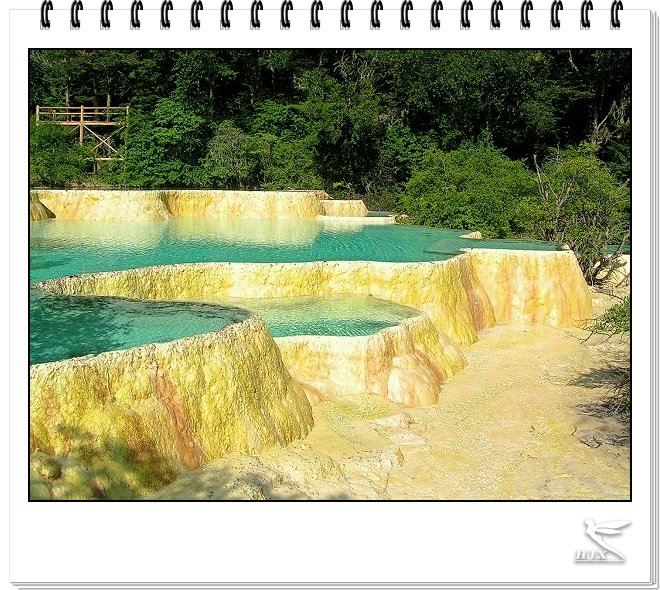

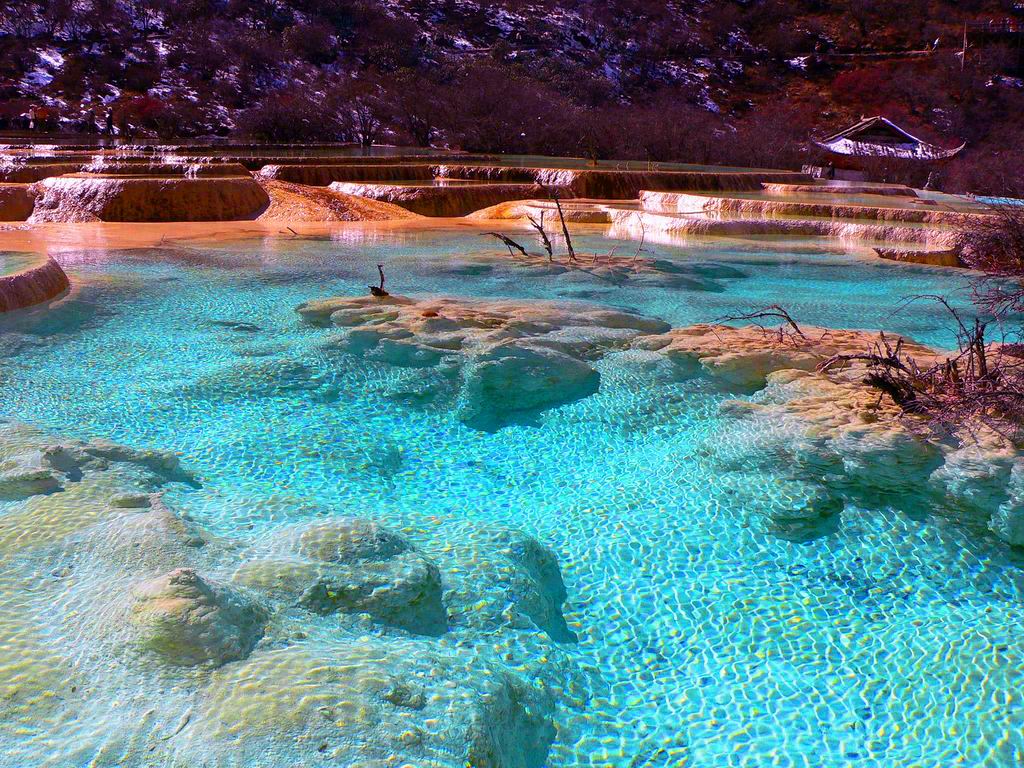
Yellow Dragon scenic area
Located in Songpan county of Tibetan and Qiang autonomous prefecture of Aba in Sichuan Province, Yellow Dragon scenic area covers 700 square kilometers of land. Its main sights of interest are grouped in the 3.6 kilometer-long Yellow Dragon ravine which is covered with layers of sedimentary trvertine carbonate like terraced fields, resembling a huge yellow dragon. Other sceneries include snow-capped mountains, watefalls, virgin forests and canyons. Apart from its unique karst landform, Yellow Dragon scenic area is also known for its rich resources of flora and fauna. From the bottom of Yellow Dragon ravine (2,000 meters above sea level) to the mountain top (3,800 meters abovd sea level) exist in sequence subtropical evergreen trees mingled with deciduous broadleaf trees, conniferous and broadleaf mingled forests, conniferous orohylile, and corypgile. Sauntering among these forests are a dozen rare animal species including giant Panda and Golden Monkey. The Karst landform complimented by rare flora and fauna resources presnts a heavenly scene. and the majestic, precipitous, grotesque and primeval sceneries win Yellow Dragon scenic area many titles including "the world's marvellous scenery" and "immortals' abode on earth".

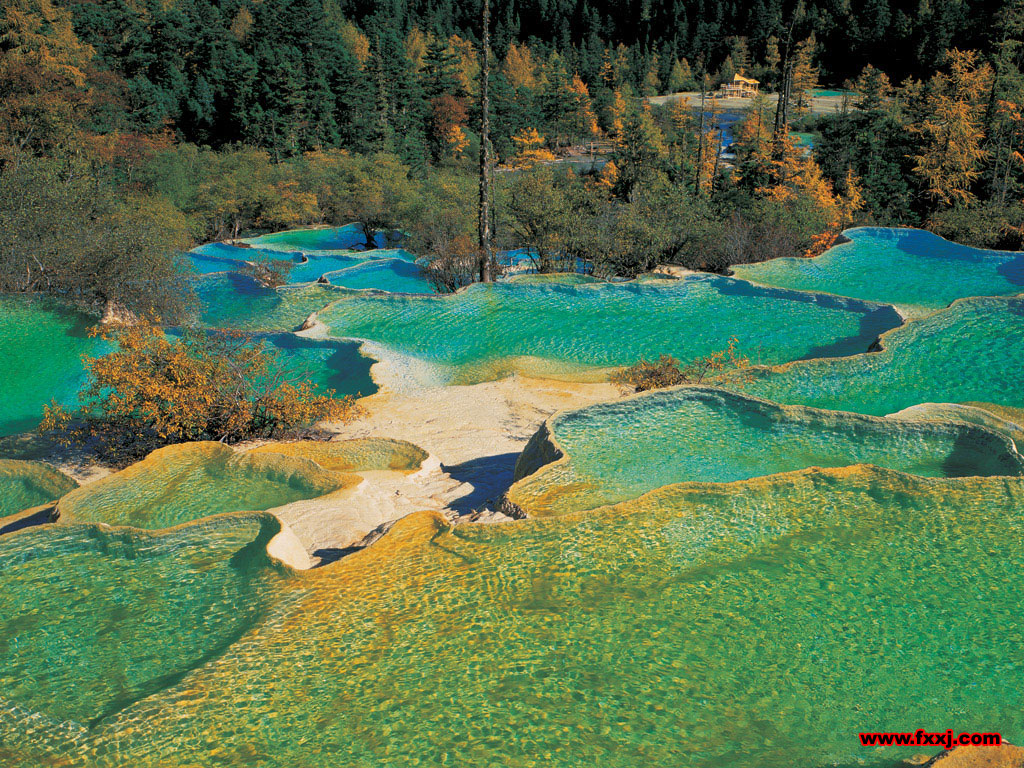
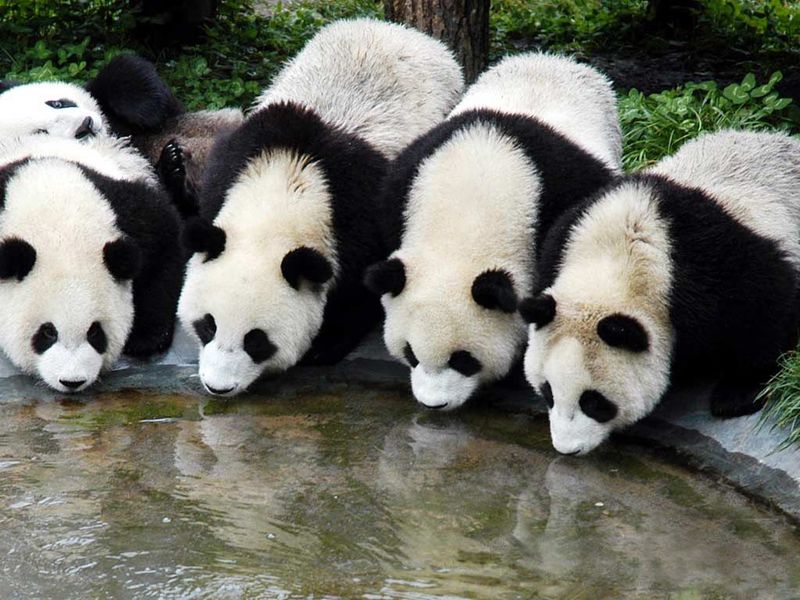
Wolong Panda Reserve
Wolong nature reserve is a national nature reserve, which serves to protect the giant Panda, Golden Monkey, dove tree and high mountain ecosystem.(Visitors can take pictures with giant Pandas.)
Dujiangyan Irrigation System |
The Dujiangyan irrigation system is a miracle of ancient chinese ingenuity. Before the completion of dujiangyan, the plains around the Min river were prone to floods due to the fast moving min river flowing down from its mountain source and meeting flat ground. It was in the warring states period about 2200 years ago, that the engineer Li Bing and his son led the construction of the dujiangyan irrigation system that tamed the Min river and irrigated the surrounding plains. The central brilliant idea of the project is the annual silt removal and maintenance plan devised by li bing that ensures the projects long-term usefulness. The actual structure of the project includes a dyke that divides the Min river into inner and outer flows. The inner flow is then redirected to irrigate local farmland. One interesting thing about the irrigation system is the that project is ongoing and has expanded to more than three times its original irrigated area of 1 million hectares. |
Itinerary of the trip:
Day 01: Fly to Chengdu from home cities.
Overnight in Chengdu—the Capital of Sichuan province.
Day 02: Bus to Wolong to visit the China Wolong Panda Reserve Base.
Bus to Maoxian county. Overnight in Maoxian county
Day 03: Bus to Yellow Dragon scenic area to visit the beautiful scenery (see the
details above introduction) Arrive in Jiuzhaigou valley.
Overnight at the Jiuzhaigou valley Entrance Area
Day04: Whole day visit in the Jiuzhaigou valley
Day05: Bus to Dujiangyan city. On the way visit the Songpan ancient town and
drive along the Min river to visit the some minority villages on the way.
Overnight in Dujiangyan city
Day 06: Visit the Dujiangyan Irrigation System and the ancient temple on the
mountain. Bus back to Chengdu and overnight in Chengdu
Day 07: City tour in Chengdu and fly back to home cities.
